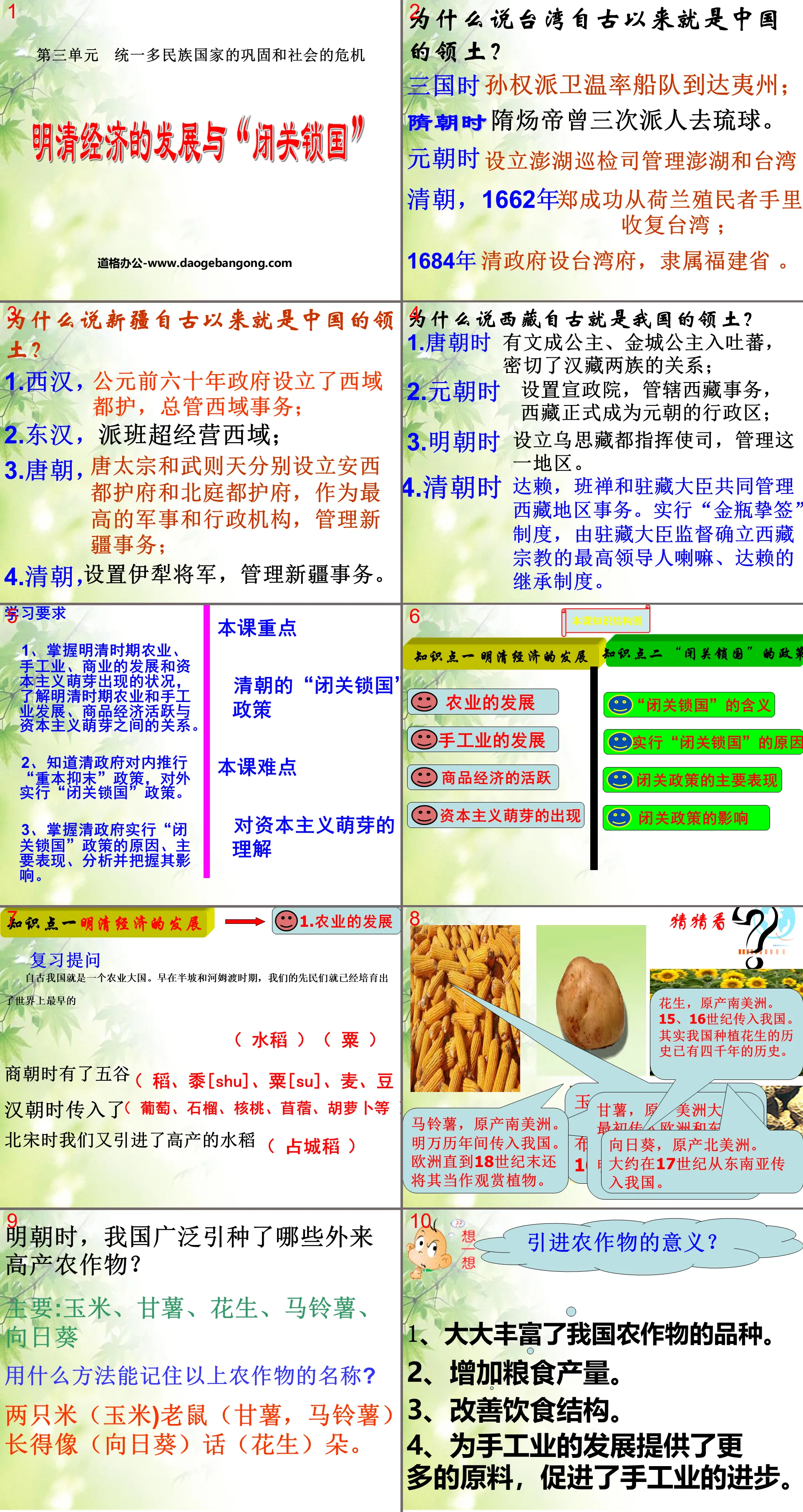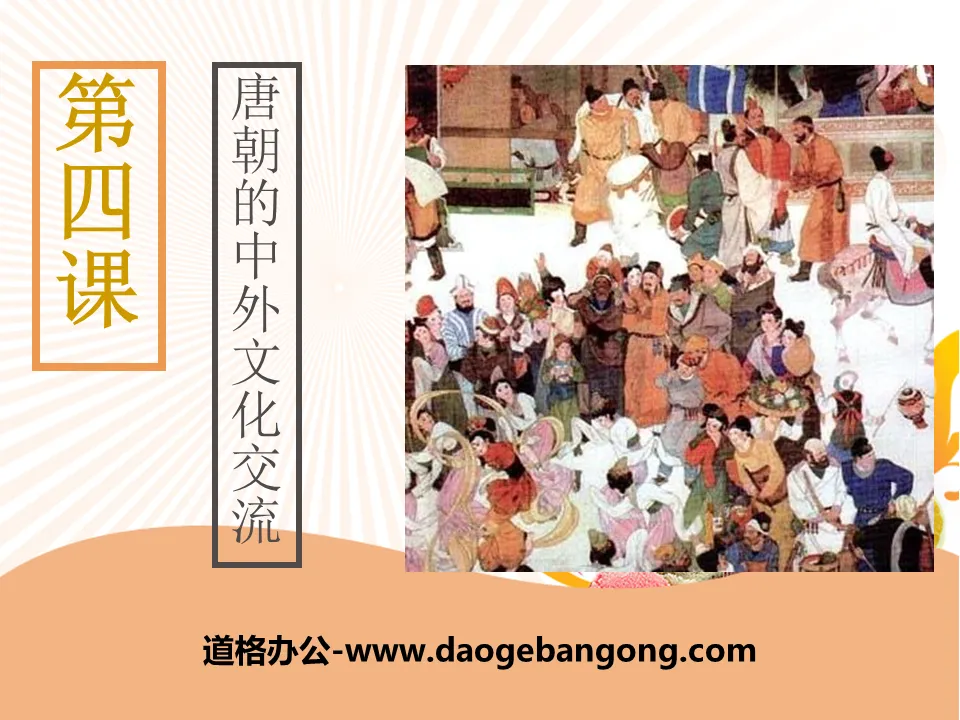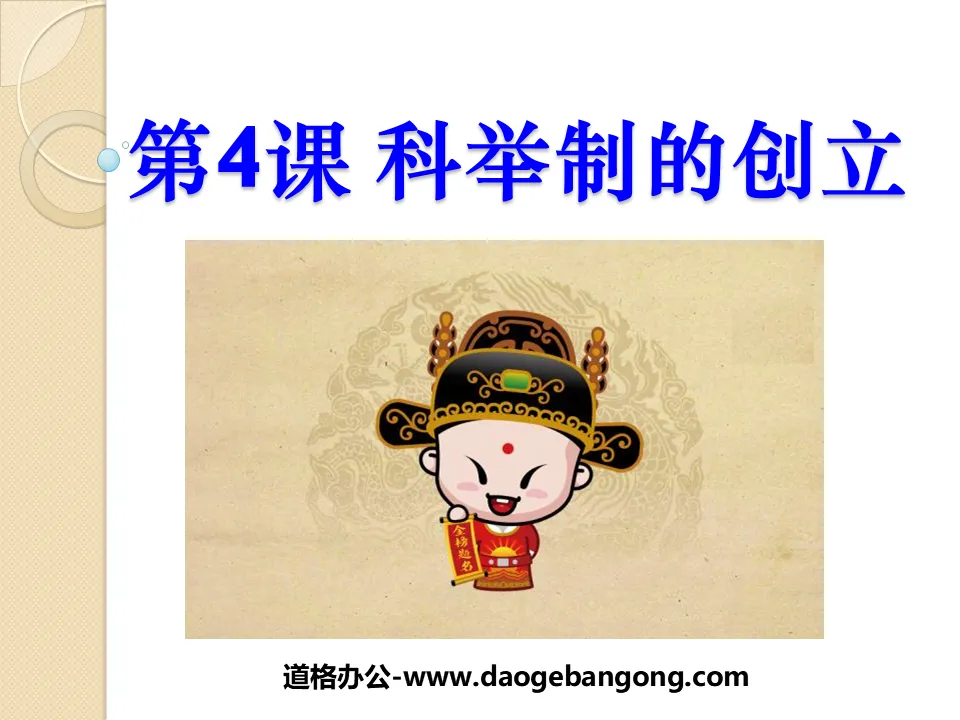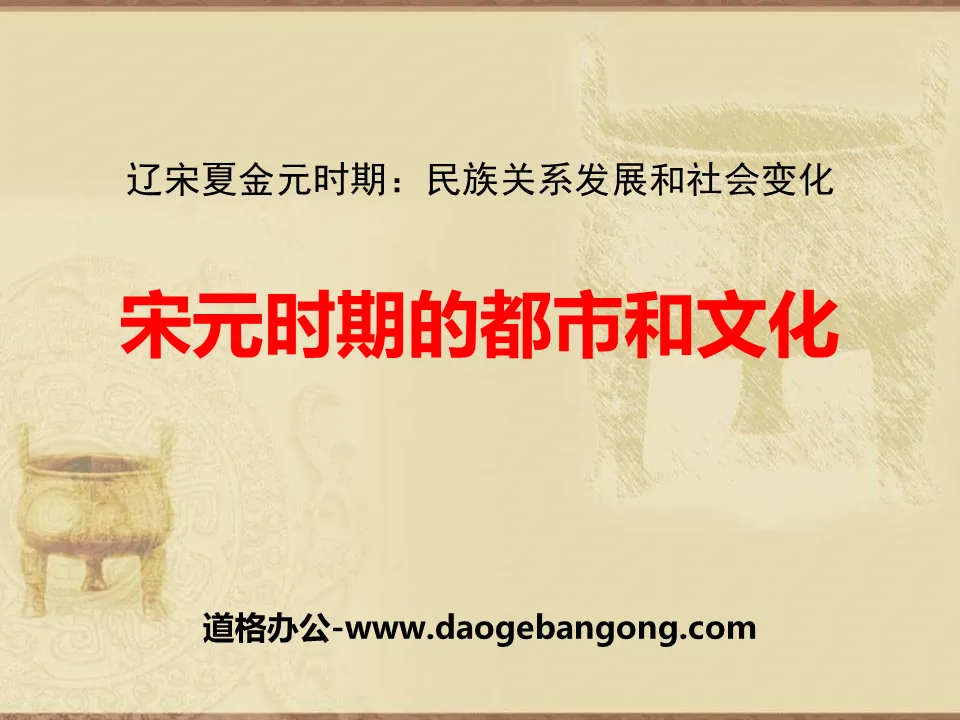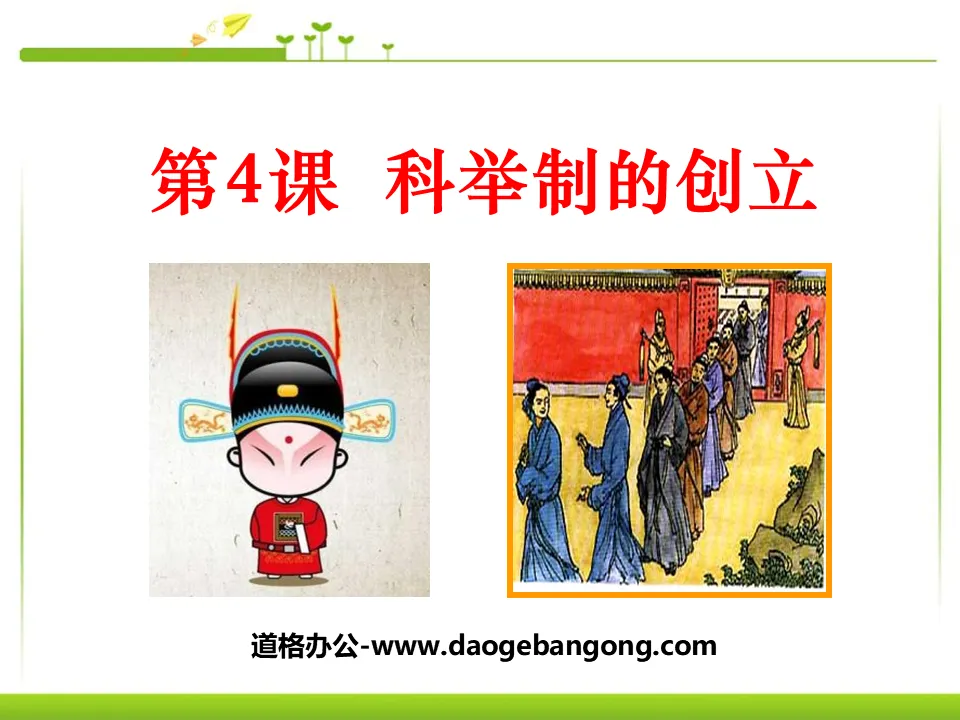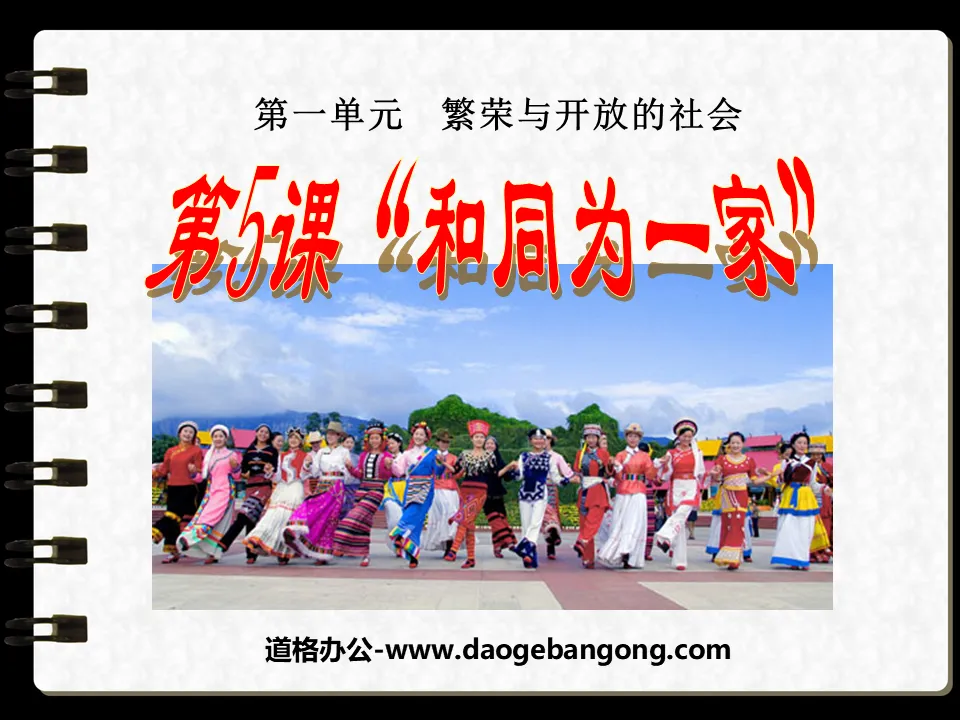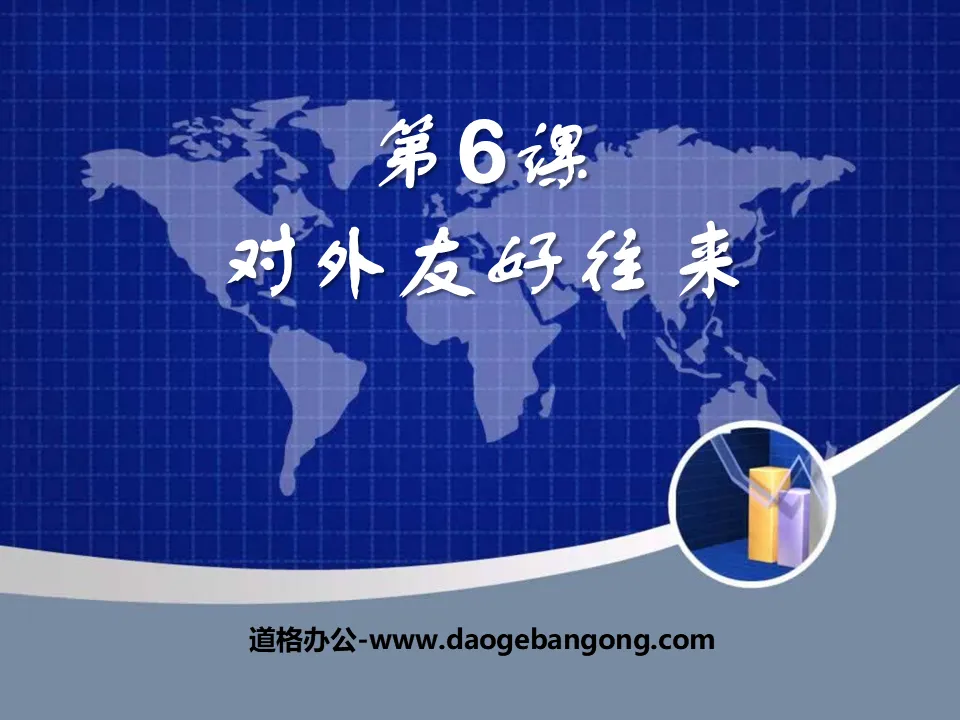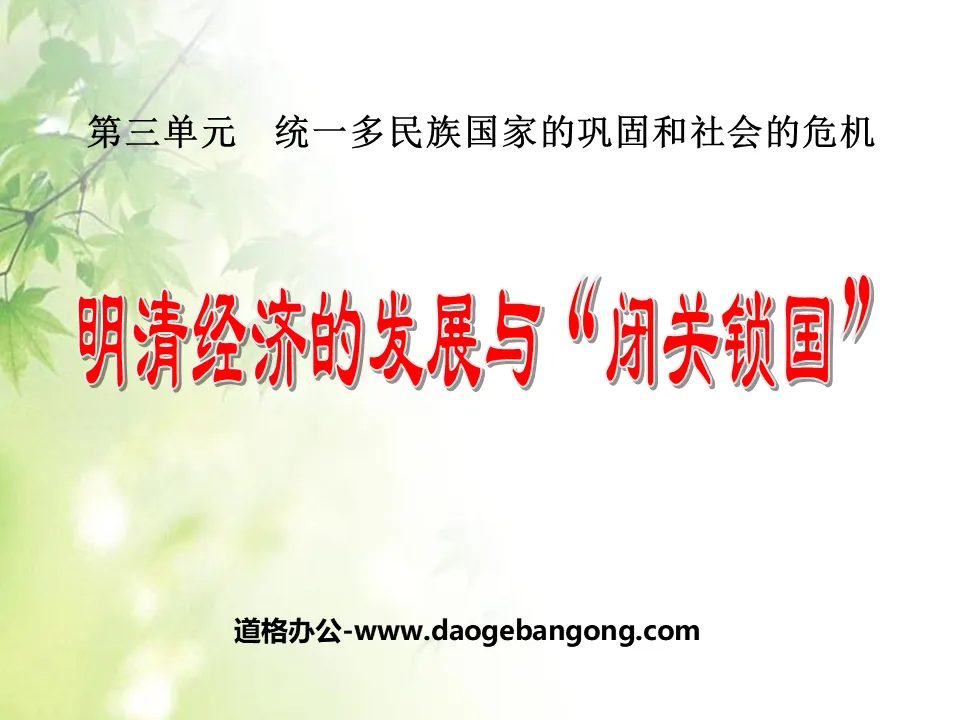
| Category | Format | Size |
|---|---|---|
| People's Education Press Seventh Grade History Volume 2 | pptx | 6 MB |
Description
"Economic Development and Seclusion in the Ming and Qing Dynasties" Consolidation of a Unified Multi-Ethnic Country and Social Crisis PPT Courseware 4
Why is it said that Taiwan has been China's territory since ancient times?
During the Three Kingdoms period, Sun Quan sent Wei Wen to lead a fleet to Yizhou;
During the Sui Dynasty, Emperor Yang of the Sui Dynasty sent people to Ryukyu three times.
During the Yuan Dynasty, the Penghu Inspection Department was established to manage Penghu and Taiwan;
Qing Dynasty, 1662 Zheng Chenggong recovered Taiwan from Dutch colonists;
In 1684, the Qing government established Taiwan Prefecture under the jurisdiction of Fujian Province.
Why is Xinjiang said to have been China’s territory since ancient times?
1. In the Western Han Dynasty, in 60 BC, the government established the Protector of the Western Regions to take charge of affairs in the Western Regions;
2. In the Eastern Han Dynasty, Banchao was sent to manage the Western Regions;
3. In the Tang Dynasty, Emperor Taizong and Wu Zetian established the Anxi Protectorate and the Beiting Protectorate respectively as the highest military and administrative agencies to manage Xinjiang affairs;
4. In the Qing Dynasty, General Yili was established to manage Xinjiang affairs.
Why is it said that Tibet has been our territory since ancient times?
1. During the Tang Dynasty, Princess Wencheng and Princess Jincheng entered Tubo, which strengthened the relationship between the Han and Tibetan peoples;
2. During the Yuan Dynasty, the Xuanzheng Yuan was established to govern Tibetan affairs, and Tibet officially became an administrative region of the Yuan Dynasty;
3. During the Ming Dynasty, the Usi Tibetan Capital Command and Envoy Department was established to manage this area.
4. During the Qing Dynasty, the Dalai Lama, the Panchen Lama and the Minister in Tibet jointly managed the affairs of Tibet. The "Golden Vase Lot" system is implemented, and the minister in charge of Tibet supervises the establishment of the succession system for the Lama and the Dalai Lama, the top leaders of Tibetan religion.
1. Development of agriculture
Our country has been a large agricultural country since ancient times. As early as the Banpo and Hemudu periods, our ancestors had cultivated the world's earliest (rice) (millet)
During the Shang Dynasty, there were five grains (rice, millet, millet, wheat, and beans).
Introduced during the Han Dynasty (grapes, pomegranates, walnuts, alfalfa, carrots, etc.)
In the Northern Song Dynasty, we introduced high-yielding rice (Chamcheng rice)
During the Ming Dynasty, what exotic high-yielding crops were widely introduced in my country?
Mainly: corn, sweet potato, peanut, potato, sunflower
How can I remember the names of the above crops?
Two rice (corn) mice (sweet potato, potato) look like (sunflower) and (peanut) flowers.
What is the significance of introducing crops?
1. Greatly enriched the varieties of crops in our country.
2. Increase food production.
3. Improve dietary structure.
4. Provide more raw materials for the development of handicraft industry and promote the progress of handicraft industry.
2. Development of handicraft industry
In which sectors did the development of handicraft industry in the Ming and Qing Dynasties manifest itself?
The cotton textile industry was pushed from the south to the north during the Ming Dynasty, and a number of cotton textile industry bases emerged in both the north and the south.
Silk weaving industry
Suzhou was the center of the silk weaving industry in the Ming Dynasty
Nanjing's silk weaving industry catches up from behind
In the Qing Dynasty, there were more than 30,000 looms
Porcelain making industry Jingdezhen is the porcelain making center in the country.
3. Active commodity economy
What were the specific manifestations of the active commodity economy during the Ming and Qing Dynasties?
(1) Unprecedentedly active.
(2) Beijing and Nanjing are national commercial cities.
(3) Many wealthy people are actively engaged in business activities and promote the development of commerce. The most famous ones are Shanxi merchants in Shanxi and Hui merchants in southern Anhui.
(4) Increased variety of commodities: more than 200 kinds of agricultural products and handicrafts put on the market
Knowledge point 2: The policy of "closing the country apart"
"Seclusion" originally meant closing the city gates, and later it was extended to mean cutting off communication; "suoguo" refers to closing the country like a locked door and not having any contact with foreign countries. "Seclusion" was a policy adopted by the feudal government during the Ming and Qing Dynasties to restrict and prohibit foreign traffic and trade, and to refuse exchanges with other countries.
Traditional concepts: The rulers of the Qing Dynasty insisted on putting agriculture first and implemented the policy of "focusing on the roots and suppressing the weak", suppressing and restricting the development of private industry and commerce.
The rulers' arrogance. Due to the stable self-sufficient feudal economy, the Qing rulers believed that China was rich in products and had everything, and there was no need for economic exchanges with the outside world.
Preventing Foreign Invasion At that time, Western colonists were expanding their influence to the East, and the Qing rulers were worried that the country's territorial sovereignty would be invaded by foreign countries.
People on the coast are afraid that interacting with foreigners will endanger their rule.
The main manifestations of the closed-door policy
(1) Implement a strict sea ban policy and strictly prohibit coastal people from trading at sea without authorization.
(2) From opening only four ports to one port in Guangzhou as a foreign trade port, the "Guangzhou Thirteen Banks" were chartered to uniformly operate and manage trade.
(3) Strictly restrict the types of export commodities and the carrying capacity of ships going to sea.
The serious consequences of the closed-door policy:
① Restricts the development of foreign trade and navigation, thereby hindering the growth of capitalist factors;
②Restricting cultural exchanges between China and foreign countries hinders China from mastering the world's advanced ideas, culture, science and technology, and makes China fall behind;
③Because China fell behind, it eventually fell into a situation of being passively beaten.
Ideas: 1. Learn lessons from the "closed-door" policy; 2. Unswervingly follow the path of reform and opening up.
practice
1. The silk weaving center in the Ming Dynasty was ( )
A.SuzhouB.NanjingC.SongjiangD.Guangzhou
2. The main crops introduced from foreign countries in the Ming Dynasty were
①Corn ②Sweet potato ③Potato ④Peanut ⑤Sunflower ( )
A.①②③④ B.①③④⑤ C.①②④⑤ D.①②③④⑤
3. The national porcelain making center in the Ming Dynasty was ( )
A. Jingdezhen B. Yuezhou C. Hangzhou D. Xingzhou
4. During the Ming and Qing Dynasties, the national commercial city was ( )
A. Chang'an and Luoyang B. Chengdu and Luoyang
C. Guangzhou and Yangzhou D. Beijing and Nanjing
5. In the middle and late Ming Dynasty, the workers employed in manual workshops were ( )
A. Machine house B. Machine room C. Machine worker D. Weaver house
Keywords: teaching courseware on the consolidation of a unified multi-ethnic country and the crisis of society, teaching courseware on economic development and seclusion in the Ming and Qing Dynasties, PPT courseware on the second volume of the seventh grade history of the New People’s Education Press, download of the history slide courseware for the seventh grade, unification of multiple Download the PPT courseware on the consolidation of the nation-state and the crisis of society, download the PPT courseware on economic development and seclusion in the Ming and Qing Dynasties, in .ppt format
For more information about the PPT courseware "Consolidation of a Unified Multi-ethnic State and Social Crisis, Economic Development and Seclusion in the Ming and Qing Dynasties", please click on the Consolidation of a Unified Multi-ethnic State and Social Crisis ppt Economic Development and Seclusion in the Ming and Qing Dynasties ppt tag.
"Economic Development and Seclusion in the Ming and Qing Dynasties" Consolidation of a Unified Multi-Ethnic Country and Social Crisis PPT Courseware 5:
"Economic Development and Seclusion in the Ming and Qing Dynasties" Consolidation of a Unified Multi-Ethnic State and Social Crisis PPT Courseware 5 Learning Requirements 1. Master the development of agriculture, handicrafts, and commerce and the emergence of capitalism during the Ming and Qing Dynasties, and understand the Ming and Qing Dynasties Agriculture and handicrafts developed...
"Economic Development and Seclusion in the Ming and Qing Dynasties" Consolidation of a Unified Multi-Ethnic Country and Social Crisis PPT Courseware 3:
"Economic Development and Seclusion in the Ming and Qing Dynasties" The Consolidation of a Unified Multi-Ethnic State and the Crisis of Society PPT Courseware 3 Learning requirements require mastering the development of agriculture, handicrafts, and commerce and the emergence of capitalism during the Ming and Qing Dynasties, and understanding of agriculture and the emergence of capitalism during the Ming and Qing Dynasties The development of handicraft industry,...
"Economic Development and Seclusion in the Ming and Qing Dynasties" Consolidation of a Unified Multi-Ethnic Country and Social Crisis PPT Courseware 2:
"Economic Development and Seclusion in the Ming and Qing Dynasties" The Consolidation of a Unified Multi-Ethnic State and the Crisis of Society PPT Courseware 2 Please summarize: What measures did the Qing Dynasty take in the early period to maintain a unified multi-ethnic country? 1. Qianlong put down the rebellions of Hezhuo and Xiaohezhuo and established General Yili. 2. Canonization..
File Info
Update Time: 2024-06-14
This template belongs to History courseware People's Education Press Seventh Grade History Volume 2 industry PPT template
"Economic Development and Seclusion in the Ming and Qing Dynasties" Consolidation of a Unified Multi-Ethnic Country and Social Crisis PPT Courseware 4 Simple campus recruitment activity planning plan summary enterprise and institution recruitment publicity lecture PPT template is a general PPT template for business post competition provided by the manuscript PPT, simple campus recruitment activity planning plan summary enterprise and institution recruitment promotion Lecture PPT template, you can edit and modify the text and pictures in the source file by downloading the source file. If you want more exquisite business PPT templates, you can come to grid resource. Doug resource PPT, massive PPT template slide material download, we only make high-quality PPT templates!
Tips: If you open the template and feel that it is not suitable for all your needs, you can search for related content "Economic Development and Seclusion in the Ming and Qing Dynasties" Consolidation of a Unified Multi-Ethnic Country and Social Crisis PPT Courseware 4 is enough.
How to use the Windows system template
Directly decompress the file and use it with office or wps
How to use the Mac system template
Directly decompress the file and use it Office or wps can be used
Related reading
For more detailed PPT-related tutorials and font tutorials, you can view: Click to see
How to create a high-quality technological sense PPT? 4 ways to share the bottom of the box
Notice
Do not download in WeChat, Zhihu, QQ, built-in browsers, please use mobile browsers to download! If you are a mobile phone user, please download it on your computer!
1. The manuscript PPT is only for study and reference, please delete it 24 hours after downloading.
2. If the resource involves your legitimate rights and interests, delete it immediately.
3. Contact information: service@daogebangong.com
"Economic Development and Seclusion in the Ming and Qing Dynasties" Consolidation of a Unified Multi-Ethnic Country and Social Crisis PPT Courseware 4, due to usage restrictions, it is only for personal study and reference use. For commercial use, please go to the relevant official website for authorization.
(Personal non-commercial use refers to the use of this font to complete the display of personal works, including but not limited to the design of personal papers, resumes, etc.)
Preview
